For NBA teams looking to open up cap room, simply waiving a player isn’t as effective as it is in the NFL, where salaries are often non-guaranteed and most or all of a player’s cap charge can frequently be wiped from a team’s books. Still, the NBA’s Collective Bargaining Agreement does feature a rule that allows teams to spread a player’s cap hit over multiple seasons. This is called the stretch provision.
The stretch provision ensures that any player waived with more than $500K in guaranteed salary remaining on his contract will have the payment schedule of that money spread across multiple years. That schedule is determined as follows:
- If a player clears waivers between the start of the league year and August 31, his remaining salary is paid over twice the number of years remaining on his contract, plus one.
- Note: A player must be waived by August 29 at 4:00 pm Central time in order to clear waivers on August 31.
- If a player clears waivers between September 1 and the end of his league year, his current-year salary is paid on its normal schedule, with any subsequent years spread over twice the number of remaining years, plus one.
- If a player in the final year of his contract clears waivers after September 1, the stretch provision does not apply.
While the new payment schedule for a waived player is non-negotiable, teams get to decide whether or not to apply the stretch provision to that player’s cap charges as well. A team can stick to the original schedule for cap hit purposes, if it so chooses.
Word broke on Wednesday that the Suns are waiving and stretching Nassir Little, providing a useful real-life example for how the stretch provision functions. Little’s cap hits prior to his release are $6.75MM in 2024/25, $7.25MM in ’25/26, and $7.75MM in ’26/27.
Here’s what that contract would look like if it were waived without applying the stretch provision to the cap hits; if it were stretched before August 31; or if it were stretched after August 31:
| Year | Waived without stretching |
Stretched by 8/31/24 |
Stretched after 8/31/24 |
|---|---|---|---|
| 2024/25 | $6,750,000 | $3,107,143 | $6,750,000 |
| 2025/26 | $7,250,000 | $3,107,143 | $3,000,000 |
| 2026/27 | $7,750,000 | $3,107,143 | $3,000,000 |
| 2027/28 | – | $3,107,143 | $3,000,000 |
| 2028/29 | – | $3,107,143 | $3,000,000 |
| 2029/30 | – | $3,107,143 | $3,000,000 |
| 2030/31 | – | $3,107,143 | – |
As this chart shows, it typically makes sense to waive and stretch a player’s contract in July or August if the team is looking to generate immediate cap flexibility for the current season and isn’t as concerned about the impact in future seasons.
 By waiving and stretching Little now, the Suns will trim over $3.6MM from their 2024/25 cap, generating significant short-term savings in projected luxury tax penalties, since they’re operating so far into tax territory. However, Little will remain on their books through 2031 instead of 2027.
By waiving and stretching Little now, the Suns will trim over $3.6MM from their 2024/25 cap, generating significant short-term savings in projected luxury tax penalties, since they’re operating so far into tax territory. However, Little will remain on their books through 2031 instead of 2027.
Phoenix is utilizing the stretch provision in order to create salary and tax savings. In other cases, stretching one or more players can allow a team to duck below the luxury tax line or to create additional cap room.
Back in the summer of 2022, for example, the Trail Blazers waived and stretched Eric Bledsoe and Didi Louzada, which allowed them to sneak below the tax line. The Pacers, meanwhile, waived and stretched Nik Stauskas, Juwan Morgan, and Malik Fitts in order to carve out a little extra cap room in order to sign Deandre Ayton to a maximum-salary offer sheet.
If a club waiving a guaranteed contract in July or August isn’t seeking immediate cap relief, it generally makes more sense to apply the player’s full current salary to the current salary-cap year, rather than stretching it.
The Hornets took that route when they waived Davis Bertans in July, applying his remaining $5.25MM in guaranteed money entirely to the 2024/25 cap. If they’d stretched it, they could’ve carried $1.75MM for each of the next three seasons, creating an extra $3.5MM in cap room this summer, but they had no immediate use for that cap room and decided it’d be better to clear Bertans from their books in one year, rather than in three years.
There are a few more key rules related to the stretch provision worth noting.
Buyouts:
While the stretch provision regulates when money is paid out, it doesn’t prevent teams and players from negotiating a reduced salary as part of a buyout agreement.
For instance, let’s say a player who has an $18MM expiring contract for 2024/25 agrees in August to give up $3MM in a buyout. As a result of that buyout agreement, his team could stretch his remaining salary and end up with cap hits of $5MM for three seasons (through ’26/27) rather than $6MM.
Non-guaranteed money/years:
Non-guaranteed money isn’t subject to the stretch provision, since a team isn’t obligated to pay the non-guaranteed portion of a contract once it waives a player. However, non-guaranteed years (not counting team options) are taking into account when determining how many years the contract is spread across.
This rule can come in handy when a club decides to waive a player who has one or two non-guaranteed years tacked onto the end of his contract. When the Blazers waived Louzada in August of 2022, he had three years left on his deal, but only his 2022/23 salary of $1,876,222 was guaranteed — the $4,023,212 owed to him for the two seasons beyond that one was fully non-guaranteed.
That means that when they waived Louzada, the Blazers only owed him just $1,876,222 but were able to stretch that figure across seven seasons (twice the three years remaining on his contract, plus one). As a result, Portland is carrying tiny $268,032 cap charges for Louzada on its books through the 2028/29 season.
The stretch limit:
A team isn’t permitted to stretch a player’s salary if the portion of the team’s salary made up of waived players projects to exceed 15% of the salary cap in any future seasons.
For instance, with a $154,647,000 salary cap projected for 2025/26, a team carrying $24MM in dead money for that season wouldn’t have been permitted to use the stretch provision while waiving a player on an expiring contract prior to August 31, 2024. This rule doesn’t come into play often, since it’s extremely rare for a team to carry that much dead money on its books for a future season.
The delayed stretch:
Under the current Collective Bargaining Agreement, if a team waives a player with multiple years of guaranteed money left on his contract and doesn’t utilize the stretch provision at the time of his initial release, the team could still choose to deploy the stretch provision on the contract in a future season.
For instance, when the Cavaliers bought out Ricky Rubio in January 2024, they initially took on cap hits of $3,722,327 for 2023/24 and $1,274,015 for ’24/25, opting not to use the stretch provision. However, prior to the August 31, 2024 deadline, the Cavs decided to stretch the final-year salary owed to Rubio, turning that $1,274,015 into three annual cap hits of $424,672, running through the ’26/27 season.
Rubio’s contract just had two years left on it at the time of his release, but if it had covered, say, four seasons, the Cavaliers could have made the decision to stretch his leftover salary at any time until August 31, 2026.
A contract can only be stretched once, so after stretching JaVale McGee‘s remaining salary across five seasons in 2023, the Mavericks wouldn’t be permitted to “re-stretch” it in a future season.
This delayed stretch rule only applies to contracts that have been terminated since the start of the 2023/24 league year.
Re-signing a stretched player:
Finally, it’s important to clarify that when a team applies the stretch provision to a player’s cap hits, that team becomes ineligible to re-sign the player for the original remaining term of his contract.
For example, after they stretch Little’s contract, the Suns won’t be able to re-sign him until July 2027, which is when his contract originally would’ve expired. That restriction doesn’t apply when a team waives a player and doesn’t stretch his remaining guaranteed salary.
If a team waives a player without stretching his remaining salary, then re-signs or reacquires him before his original contract would have expired, that team isn’t permitted to use the stretch provision on his new deal.
Note: This is a Hoops Rumors Glossary entry. Our glossary posts will explain specific rules relating to trades, free agency, or other aspects of the NBA’s Collective Bargaining Agreement. Larry Coon’s Salary Cap FAQ was used in the creation of this post.
Earlier version of this post were published in 2013, 2017, and 2023.

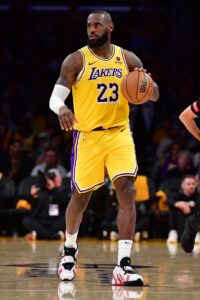
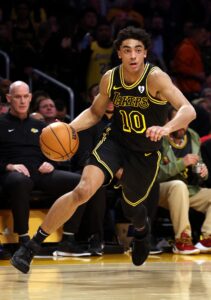 Ultimately, the Lakers appear likely to enter the 2024/25 season with a relatively similar roster to the one that finished the ’23/24 campaign. They’ll bet on internal improvement and will hope to get some contributions from their newly drafted rookies.
Ultimately, the Lakers appear likely to enter the 2024/25 season with a relatively similar roster to the one that finished the ’23/24 campaign. They’ll bet on internal improvement and will hope to get some contributions from their newly drafted rookies.
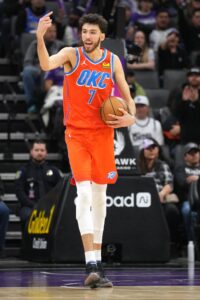
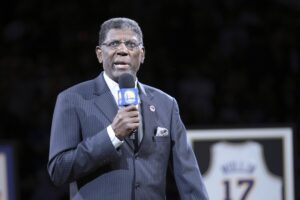 Drafted by the then-Philadelphia Warriors out of North Carolina A&T in 1960, Attles spent his 11-year career as an NBA player with the Warriors, who relocated to San Francisco in 1962.
Drafted by the then-Philadelphia Warriors out of North Carolina A&T in 1960, Attles spent his 11-year career as an NBA player with the Warriors, who relocated to San Francisco in 1962.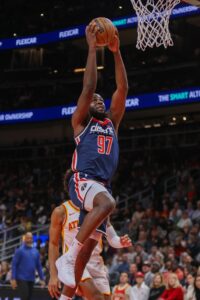 Omoruyi is currently on an expiring $2,196,970 contract. However, his salary is fully non-guaranteed, so Washington wouldn’t be on the hook for any of that money once he’s been officially released.
Omoruyi is currently on an expiring $2,196,970 contract. However, his salary is fully non-guaranteed, so Washington wouldn’t be on the hook for any of that money once he’s been officially released.